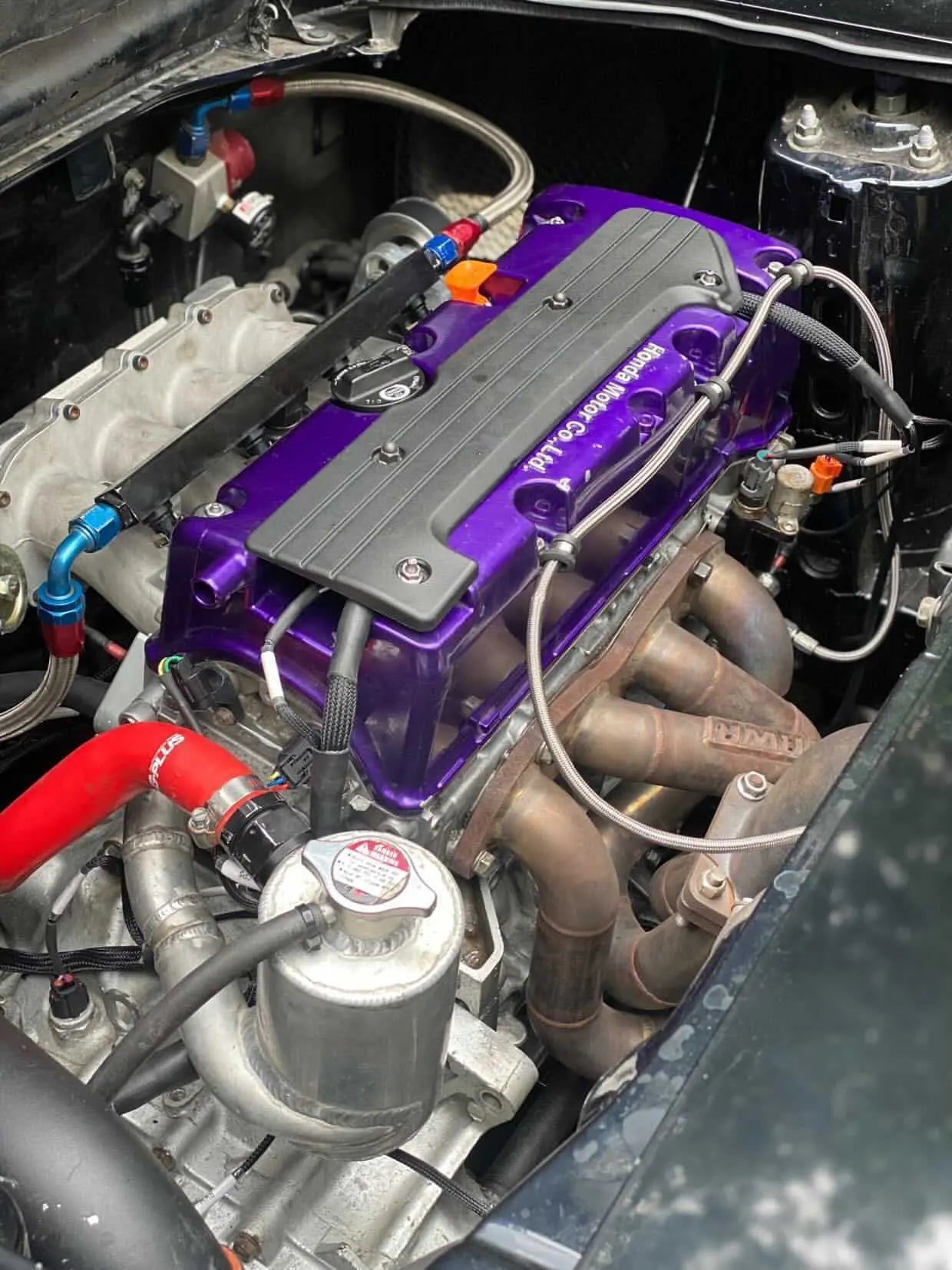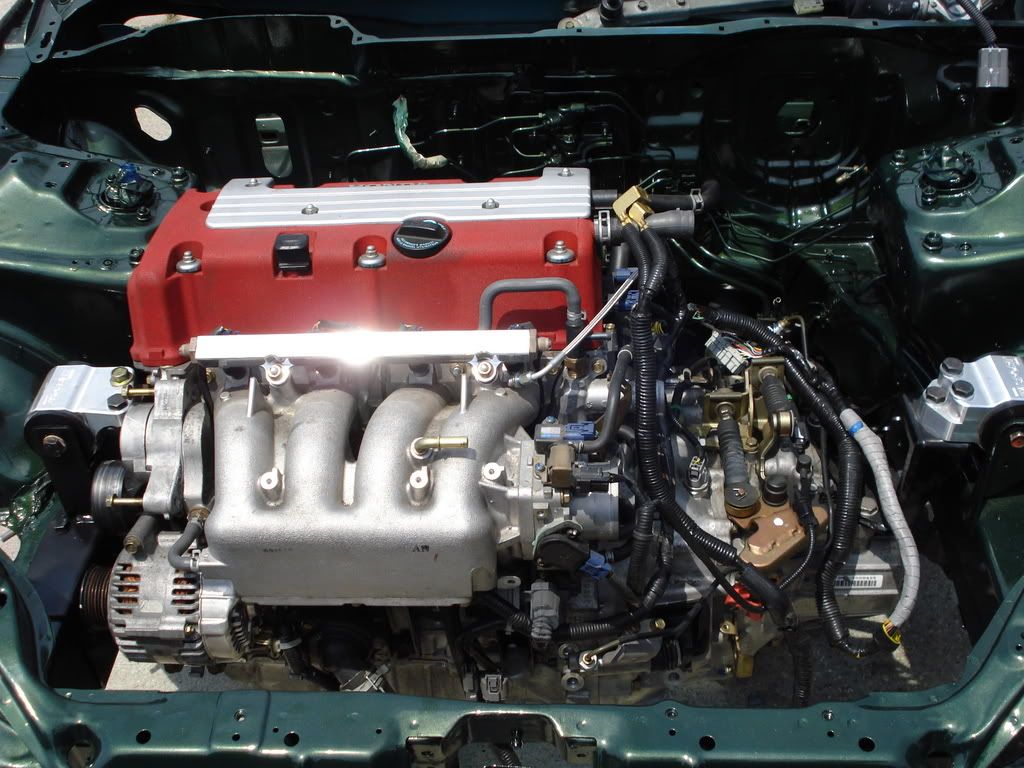Discover the Value of the K20 Engine in Modern Automotive Engineering
The K20 engine, introduced in 2001, has actually left an indelible mark on automotive engineering. Its influence can be traced in subsequent engine styles, and its appeal among lovers is indisputable.
The Beginning and Development of the K20 Engine
Despite its modest beginnings, the K20 engine has gone through a significant development given that its beginning. Established by Honda, it was introduced in 2001 as component of the 'K series' engines. The K20 was an innovative product at that time, flaunting a portable design yet effective efficiency. It was a reaction to the expanding need for more efficient engines in the vehicle sector. Over the years, its design was refined and optimized to fulfill the altering demands of modern vehicles. This renovation was not simply in terms of power, yet additionally in fuel efficiency and ecological criteria. Today, the K20 engine stands for a blend of Honda's cutting-edge design and the requirements of contemporary vehicles, noting a significant turning point in vehicle engineering.

Technical Specifications and Efficiency Functions of the K20
The K20 engine, known for its portable yet effective style, stands apart in the globe of automobile engineering because of its outstanding technical specs and efficiency features. Its i-VTEC (Smart Variable Valve Timing and Lift Electronic Control) system increases efficiency, while promoting a broad power band. The engine, essentially a 2.0-liter four-cylinder, generates in between 155 to 212 horsepower, depending on the design. The K20's high compression ratio (roughly 11:1) contributes to its exceptional performance. Its lightweight construction, largely utilizing aluminium, improves gas efficiency. Additionally, the engine's low-emission innovation aligns with modern green standards. Significantly, its reliability and toughness are acclaimed, with lots of K20 engines going beyond 200,000 miles without considerable concerns. These functions really emphasize the K20's design expertise.
The K20 Engine's Influence on Modern Engine Design
The influence of the K20 engine on contemporary engine design can not be overemphasized. Its groundbreaking performance abilities set new standards in the automobile industry, pressing borders and requiring more from engine technology. Similarly significant was its ingenious method to sustain performance, proving that efficiency and economic climate can undoubtedly coexist worldwide of high-performance engines.
Revolutionizing Efficiency Abilities

Technology in Fuel Performance
While high performance has been a specifying attribute of the K20 engine, its impact extends past raw power to the realm of fuel effectiveness. The engine's layout incorporates advanced modern technologies such as variable valve timing and lift digital control (VTEC) and direct fuel shot, which substantially enhance gas economic climate. These innovations make it possible for the engine to supply ideal power outcome while lessening gas consumption, thus setting a new requirement in efficiency. The K20 engine's ingenious gas effectiveness has driven various other producers to comply with fit, leading to greener, much more cost-effective engines throughout the sector. The K20 engine, therefore, not just revolutionized performance yet also established a standard in gas effectiveness, ending up being an important influence in modern-day engine design.
Noteworthy Automobiles Geared Up With the K20 Engine
Many automobiles have actually taken advantage of the combination of the K20 engine. Among them, the Honda Civic Kind R and the Acura RSX Type-S stand apart. These vehicles will serve as centerpieces in this conversation.
Honda Civic Kind R
The Honda Civic Type R holds a famous area amongst automobiles geared up with the remarkable K20 engine. Released in 2001, this performance-oriented version's power is originated from its K20A variation, a testament to Honda's design expertise. The engine's high-revving nature, providing 212 horse power, sets faultlessly with the auto's agile handling and sharp responses, making it a preferred among driving fanatics. Its design includes a special VTEC system, which improves shutoff control, resulting in better gas performance and power result. Significantly, the Kind R's engine additionally includes a thoroughly created exhaust manifold and a high compression ratio, contributing to its impressive performance. The implementation of the K20 engine in the Civic Type R is a prime example of the engine's capacity, reinforcing its relevance in modern-day vehicle design.
Acura RSX Type-S
An additional notable example of a lorry showcasing the K20 engine's excellent capabilities is the Acura RSX Type-S. With a 6-speed handbook transmission, the RSX Type-S offered smooth moving and optimal control, symbolizing the K20 engine's possibility in a compact yet effective plan. Obviously, the Acura RSX Type-S continues to be a remarkable testament to the K20 engine's expertise.
Tuning Possible and Adjustments of the K20 Engine
Distinguished for its excellent power and versatility, the K20 engine supplies remarkable tuning capacity and alteration opportunities. Turbo charging the k20 or turbocharging engine can find more additionally result in substantial power gains. The K20 engine's fundamental toughness and versatility make it a favorite among cars and truck tuners worldwide.
The Future of Four-Cylinder Engines: Lessons From the K20
Attracting inspiration from the remarkable capabilities of the K20 engine, the future of four-cylinder engines seems encouraging. This engine, with its cutting-edge design and general efficiency, has actually set a high standard for its successors. It is anticipated that future four-cylinder engines, while useful reference still maintaining fuel performance and compact size, will maximize the K20's strengths.
Additionally, the advancements in technology are most likely to improve the power result, sturdiness, and adaptability of these engines. The lessons picked up from the K20 engine's development and application are vital in guiding the design of future power systems. For that reason, also as automotive design develops towards advanced propulsion systems, the heritage and impact of the K20 engine on four-cylinder modern technology shall remain substantial.
Verdict
The K20 engine has without a doubt shaped contemporary automotive design with its cutting-edge style and high-performance capacities. Its influence can be seen in subsequent engine styles and its appeal amongst makers and lovers. With its possibility for tuning and alterations, the K20 remains to push the limits of what's feasible in small four-cylinder engines. The lessons picked up from the K20 will unquestionably proceed to affect the future of auto engineering.
The K20 Engine's Impact on Modern Engine Layout
The impact of the K20 engine on contemporary engine layout can not be overstated.Without A Doubt, the K20 engine has actually left an indelible mark on contemporary engine design. With the K20 engine, the automotive market observed a new era of engine style, one that prioritizes not simply raw power, but additionally the chauffeur's overall experience.
The K20 engine, for that reason, not visit just transformed performance however also established a criteria in fuel efficiency, ending up being an essential impact in contemporary engine design.